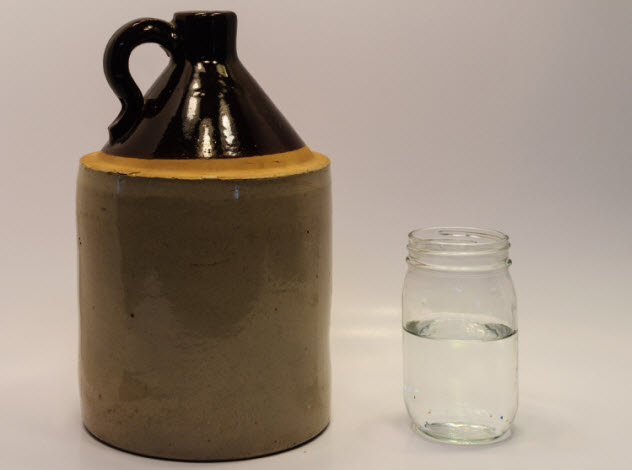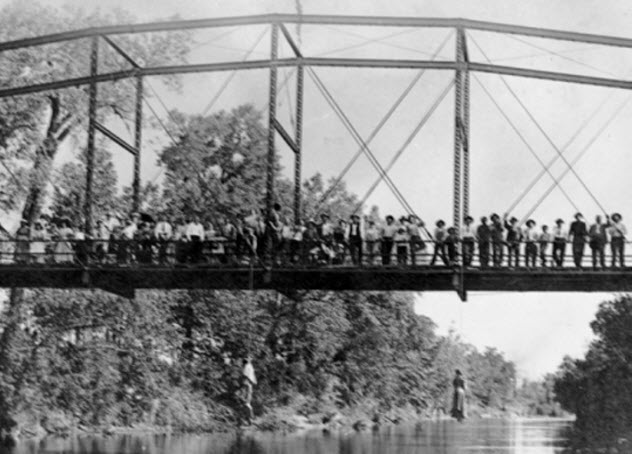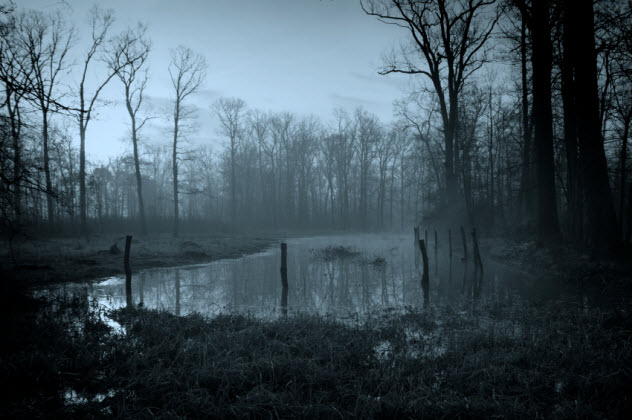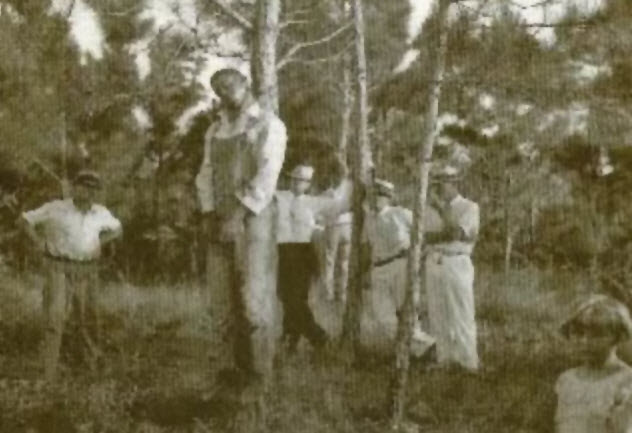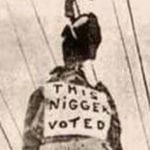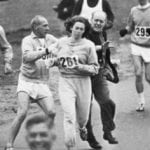Dating back to the US Civil War, American history has been stained by the blood of thousands of minorities who were lynched, especially in the South. Between the years of 1882 and 1968, there were about 4,700 documented lynchings, 3,400 of which were African-American men and women in Southern states like Mississippi, Georgia, Texas, and Louisiana. These states recorded the highest incidences of lynching. Eventually, lynchings grew into elaborate spectacles where body parts were passed around for souvenirs and smiling photos were taken with the victims’ lifeless bodies hanging in the background. Sadly, many of the victims were accused of minor infractions like theft. Others were injured or killed because they stood up for themselves. For African-American men, one of the most serious offenses was associating with or even just looking at a white woman. However, women were not exempt from lynchings. This list highlights a small number of the horrifying cases in which African-American women were lynched in America.
10 Cordella Stevenson
In 1915, a barn was set ablaze in Mississippi. Gabe Frank, the white owner of the property, sent bloodhounds to find the culprit, but they were unable to pick up a scent. Relying on suspicion instead of evidence, the public pinned the arson on Cordella Stevenson’s son. Although she claimed that he had not been living at home for a number of months, there had to be a scapegoat. Her son was it. For six days, Cordella was questioned by police about her son’s involvement in the crime. When she was released, she and her husband, Arch, had no clue that their lives were about to be changed forever. At 10:00 PM on December 15, a group of men forced their way into the Stevensons’ home. With guns aimed at Arch’s head, the men dragged Cordella out of the house. At the earliest opportunity, Arch escaped, running into town to get the police. Then Arch left the area. He was neither seen nor heard from again. As for Cordella—who may have been sexually assaulted according to witnesses—her naked body was left hanging from a tree until she was cut down the following Friday. Her killers were never brought to justice.
9 Annie And Bertha Lowman
One of South Carolina’s most tragic cases of a family lynching occurred in April 1925. Bertha Lowman and her mother, Annie, were home on April 25 when they were visited by Sheriff H.H. Howard and four other officers from Aiken County. The men came to check for illegal whiskey. They were dressed in civilian clothes and did not produce any badges. When Annie suggested that Bertha go inside, the officers ran toward the women and a chase ensued. Then Sheriff Howard struck Bertha in the mouth with his gun. Annie picked up an ax and was ready to come to her daughter’s defense. But she was shot and killed by the other deputies before she could get to her daughter. After hearing Bertha’s scream, Demon and Clarence Lowman—Annie’s son and nephew, respectively—wielded guns as they came to the aid of their family members. After exchanging gunfire with the officers, Bertha was wounded and the sheriff was dead. Clarence, Bertha, and Demon were all charged and sentenced for the sheriff’s murder. Annie’s husband, Sam, was sent to a chain gang for allegedly possessing alcohol. The young men received death penalties, and Bertha was given a life sentence. On October 8, 1926, Sam was found not guilty after a retrial. But his children and nephew were not so lucky. They were all taken out of prison by a mob and shot and killed that same day.
8 Jennie Steer
Jennie Steer, an African-American woman working as a servant in Shreveport, Louisiana, was fortunate to escape prosecution in the violent death of Mrs. Frank Matthews, her former employer’s wife. Mrs. Matthews’s son had believed that Jennie was guilty. Several months later, though, Jennie became entangled in a web from which she was unable to escape. In 1903, Elizabeth Dolan, the 10-year-old daughter of white planter John Dolan, died a painful death from poison that was unknowingly administered to her in a glass of lemonade. The fingers were pointed squarely at Jennie, so she ran away from the Dolan house. On July 25, the day of Elizabeth’s funeral, an enraged mob set out to find Jennie, who was hiding in a hayloft. She was forcibly taken to the Beard plantation and strung up on a tree. The mob demanded that Jennie confess to the murder, but she maintained her innocence until the end. After her death, some members of the mob fired shots at her lifeless body.
7 Marie Scott
As the saying goes, there are two sides to every story. This was certainly true in the case of 17-year-old Marie Scott, who was painted as both innocent and guilty of the murder of Lemuel Pearce. Newspaper accounts reported that Pearce, a deceased white male, had been in the “Negro part” of Wagoner, Oklahoma, in March 1914. As Pearce was leaving a house there, it is alleged that Marie attacked him with a knife, piercing his heart. According to another account, Marie inadvertently caught the attention of two white men passing by her window as she was combing her hair. The men entered the house, locked themselves in Marie’s room, and raped her. Marie’s brother came to her rescue with knife in hand. He stabbed and killed one of the men. When the ordeal was over, Marie’s brother fled and she was arrested instead. At 2:00 AM on March 31, Marie was taken out of the city jail by a large mob. With a rope around her neck, she was dragged to the corner of Main and First Streets where she was hanged. Marie’s killers were never prosecuted.
6 Mary Thompson
In Kentucky, Mary Thompson’s trouble began in June 1904 when her son returned a pair of pliers to a white man named John Irwin. After Irwin hit Mary’s son for taking the pliers, she set out to confront Irwin. One account suggests that Mary left with a knife in hand, while another states that she was attacked from behind by Irwin. Although the sequence of events may be hazy, the outcome was clear: The 102-kilogram (225 lb) Mary cut Irwin’s throat. Shortly afterward, she was hauled off to jail. When a mob of white men came for Mary the first time, she was defended by an equally aggressive group of African-American men carrying guns. Unfortunately, the mob came for Mary again. This time, they were successful. Mary continued to fight as she was strung up on a tree. Allegedly, she grabbed a knife from one of the men and cut herself free. But as she fell to her feet and tried to run, Mary was shot over 100 times by the mob. She died the following evening.
5 Laura Nelson
The disturbing postmortem image of Laura Nelson’s body suspended from a bridge over the Canadian River was proudly distributed as a postcard in Okemah, Oklahoma, after she and her teenage son were lynched. Two weeks before Laura died on May 25, 1911, Deputy Sheriff H. Loney paid the Nelsons a visit at their farm. The officer had come to find livestock that had been reported stolen. Allegedly, Laura’s son felt threatened. Thinking that the officer was about to take out his weapon, her son shot the deputy in the leg. The officer was refused water and bled to death. Trying to save her son, Laura took responsibility for the murder. Two weeks later, she and her son were taken out of jail by an angry mob of white people who had overpowered jailer Lawrence Payne. Laura and her son were brought to a bridge 10 kilometers (6 mi) away where they were hanged. Laura was also raped by the mob before she died.
4 Alma And Maggie Howze
A married dentist named E.L. Johnston was murdered in Mobile, Alabama, in 1918. He was supposedly wealthy and retired, but in reality, the 35-year-old Johnston was a failure who lived on his father’s farm. Johnston engaged in several adulterous affairs, including one with 20-year-old Maggie Howze. Maggie and her 15-year-old sister, Alma, were both pregnant and moved onto the Johnstons’ farm as workers. E.L. Johnston used the opportunity to keep Maggie, whom he had impregnated, close to him. Also working on the farm was Major Clark and his brother, Andrew. Major and Maggie started a relationship that infuriated Johnston. He confronted Major, who planned to marry Maggie, and expressed his disapproval of the union. Not long after their altercation, Johnston was shot and killed in December 1918. Major was immediately implicated in the murder. Before the four workers were arrested, Major was tortured and supposedly confessed. Later, an angry mob removed the suspects from the jail where they were being held before their trials. The mob took the four prisoners to a bridge over the Chickasawhay River. With nooses around their necks, the four pleaded for mercy. Major, Andrew, and Alma were thrown over the side of the bridge and were killed instantly. Maggie fought for her life before being killed on the third attempt by the mob. Allegedly, Maggie’s unborn baby was still alive during her burial two days after the lynching.
3 Mrs. Luther Holbert
On February 3, 1904, in Doddsville, Mississippi, a mob was pursuing three African-American men, including Luther Holbert. Earlier that day, John Eastland, a white plantation owner, and his tenant Albert Carr had been shot and killed after a “difficulty” occurred at the Eastland property. With a $1,200 bounty on his head, Holbert and his wife, who was dressed like a man, were holed up in a swamp to elude the hundreds of men on their trail. During the Holberts’ escape into the woods, two African-American men were killed because they were mistaken for Luther. On February 6, the Holberts were asleep when they were caught about 160 kilometers (100 mi) from where the incident had occurred. A crowd of about 1,000 people attended their lynching on February 7, 1904. Newspapers printed when and where the lynching would take place as though it was a show. Before the married couple died, sections of their bodies were removed with corkscrews and their fingers were cut off. The body parts were passed around the crowd. Then the Holberts were set ablaze and killed.
2 Mary Turner
In 1918, Hayes Turner lost his life in a lynching that was a direct result of the sins of another black man in Valdosta, Georgia. Sydney Johnson, who had murdered Mr. and Mrs. Hampton Smith over a money dispute, was at large, leaving a mob on the hunt for reparation. On May 19, as many as 13 other people were lynched in the killer’s stead. One of them was Hayes Turner. Much to the public’s dismay, Turner’s 20-year-old pregnant widow, Mary, proclaimed that she would get justice on her deceased husband’s behalf. Feeling threatened, Mary ran but could not escape her fate. She was taken to Folsom’s Bridge, tied by her ankles to hang upside-down from a tree, drenched in gasoline and motor oil, and lit on fire. Miraculously, Mary survived the ordeal. Then her body was slit open, causing her fetus to fall to the ground. The baby was stomped to death. Finally, the mob fired shots into Mary’s corpse. Three days after Mary’s lynching, Sydney Johnson’s body was mutilated by a large mob that cut off his genitals. After he was mortally wounded by police in a shoot-out, Johnson was dragged for 25 kilometers (16 mi) and burned.
1 Mae Murray Dorsey And Dorothy Malcom
In one of Georgia’s most infamous lynchings, two married couples, the Malcoms and the Dorseys, were killed in 1946 by a group of 15 whites in Monroe, Georgia. According to rumor, George Dorsey was having an affair with a white woman. It was also alleged that Roger Malcom had stabbed the son of his white boss. The son was rumored to have been involved with Malcom’s wife, Dorothy, who was seven months pregnant at the time of the lynching. On July 25, the two couples were being driven home by a white man after Roger’s release from jail. An angry mob of whites stopped the truck on the Moore’s Ford Bridge, forcibly removed the Malcoms and the Dorseys from the truck, beat them, and tied them to nearby trees. The arms of Mae Murray Dorsey and Dorothy Malcom were broken. Then the mob riddled all four bodies with bullets, leaving their corpses almost unrecognizable to family members. The driver of the truck claimed that he had been ambushed, although he was not hurt in the incident. President Harry Truman, in cooperation with the FBI, launched an investigation into the lynchings. However, no one was ever prosecuted for the brutal murders.

